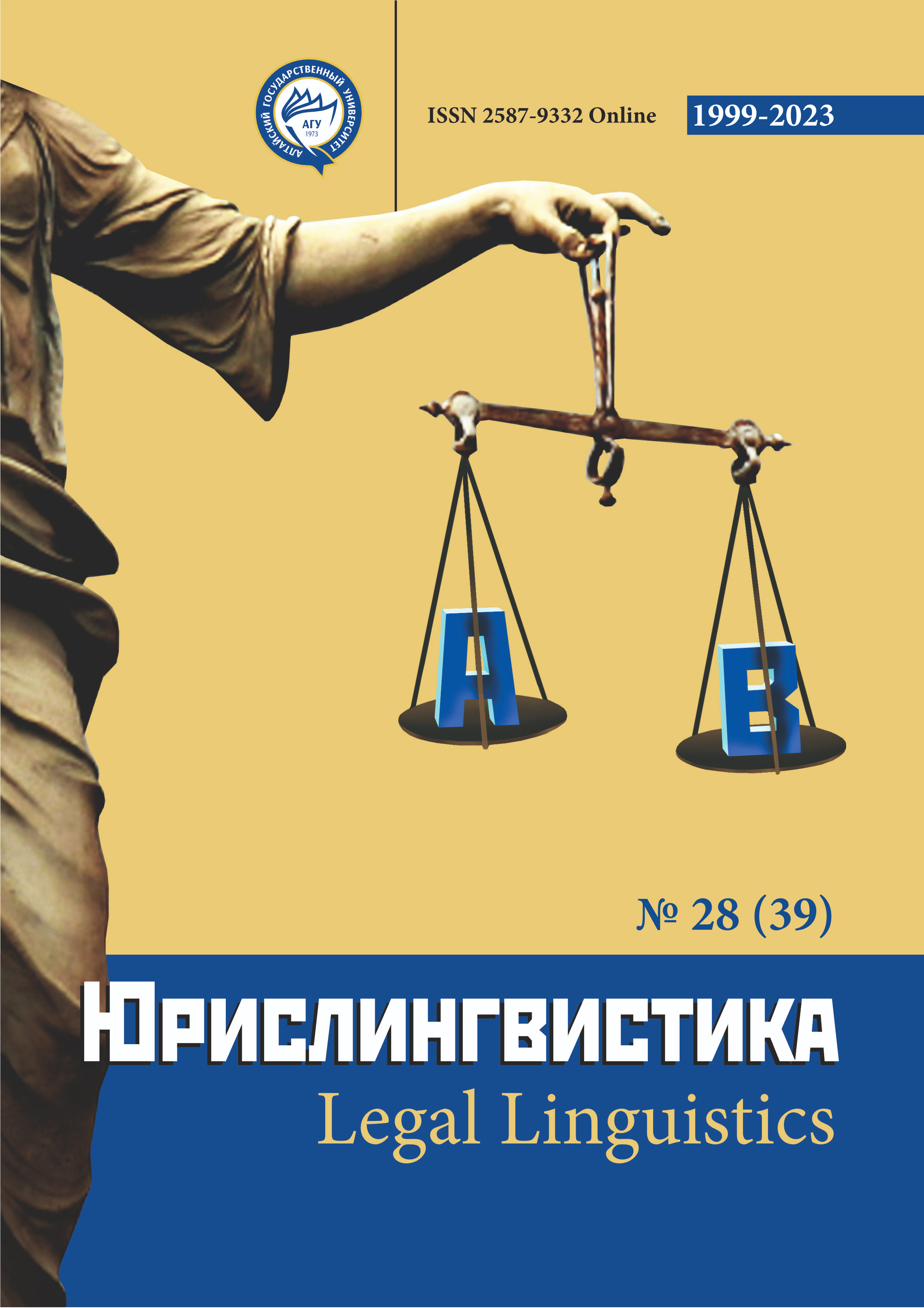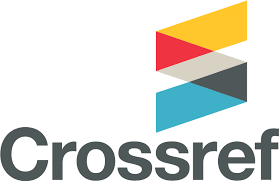Names of Genitals: Nominative Features and Their Functioning in Pornography Narrative
УДК 81`27, ББК 81
Abstract
The paper deals with the classification of ways of designation genitals in Russian. The theoretical basis is represented by researches on meaning euphemization, the theory of conceptual metaphor and existing classifications of genital vocabulary. The aim of this study is search for classification grounds needed for the systematization of the studied group of words and the description of the lexical ways of designating the genitals in Russian. The material for the study was 120 fragments of pornographic texts containing an explicit description of the consensual and nonconsensual sexual interaction. Based on the lexical-semantic analysis, four ways of nominating the genitals were identified: orthophemistic, euphemistic, dysphemistic and metaphorical ways. Anatomical terms and lexemes of the bookish and colloquial styles were attributed to the orthophemistic way of nomination. The euphemistic way of nominating the genitals included lexemes and lexical combinations which semantically accentuate the sacred status of the genitals or contain reference to their structure, location, physiological features. Euphemization of the studied somatisms was also carried out through the mention of a piece of clothing that covers the genitals or of internal organs of the reproductive system (for female genitals). Lexical constructions in which the genitals were associated with their owner were also attributed to the euphemistic method. The dysphemistic method included lexemes and lexical combinations containing in their semantics indications of the inconsistency of the genitals with the bodily canon, diminutive and augmentative terms, and obscene lexical items. Fourteen metaphorical groups of nominations for male genitalia and fifteen groups of nominations for female genitalia were identified. Four feature concepts that are involved in the formation of the figurative representation of the genitals were found: (1) external similarity, (2) functional characteristics, (3) role in sexual interaction and sexual practices, (4) sociocultural representation.
Downloads
Metrics
References
Allan K., Burridge K. Euphemism, Dysphemism, and Cross-Varietal Synonymy / La Trobe Working Papers in Linguistics. – 1988. – 1. – С. 1–17.
Almoayidi K.A. Euphemism as a Communicative Tool: A Descriptive Study of Hijazi and Southern Region Dialects Spoken in Saudi Arabia / Open Journal of Modern Linguistics. – 2018. – 08. – С. 1–8.
Bey S. Naked Bodies and Nasty Pictures: Decoding Sex Scripts in Preadolescence, Re-Examining Normative Nudity through Art Education / Studies in Art Education. – 2011. – 52(3). – С. 196–212. doi:10.1080/00393541.2011.11518835
Braun V. & Kitzinger C. “Snatch,” “Hole,” or “Honey‐pot”? Semantic categories and the problem of nonspecificity in female genital slang / Journal of Sex Research. – 2001. – 38(2). – С. 146–158. doi:10.1080/00224490109552082
Cameron D. Naming of parts: Gender, culture, and terms for the penis among American college students / American Speech. – 1992. – 67. – С. 367–382.
Cornog M. Naming sexual body parts: Preliminary patterns and implications / Journal of Sex Research. – 1986. – 22(3). – С. 393–398. doi:10.1080/00224498609551318
De Klerk V. How taboo are taboo words for girls? / Language in Society. – 1992. – 21(02). – С. 277–289. doi:10.1017/s0047404500015293
Duda B. Euphemisms and Dysphemisms: in Search of a Boundary Line. University of Rzeszow / Círculo de Lingüística Aplicada a la Comunicación. – 2011. – 45. – С. 3–19.
Edelman E. A. & Zimman L. Boycunts and Bonus Holes: Trans Men’s Bodies, Neoliberalism, and the Sexual Productivity of Genitals / Journal of Homosexuality. – 2014. – 61(5). – С. 673–690. doi:10.1080/00918369.2014.870438
Fischer G. J. Sex Words Used by Partners in a Relationship / Journal of Sex Education and Therapy. – 1989. – 15(1). – С. 50–58. doi:10.1080/01614576.1989.11074944
Gilgun J. F., & Gordon S. Sex education and the prevention of child sexual abuse / Journal of Sex Education and Therapy. – 1985. – 11. – С. 46–52.
Goldman J. The Importance of an Adequate Sexual Vocabulary for Children / Australian Journal of Marriage and Family. – 1990. – 11(3). – С.136–148. doi:10.1080/1034652x.1990.11004418
Hock H. H. Principles of historical linguistics. Berlin,1986.
Nussbaum C. O. Understanding pornographic fiction: Sex, violence, and self-deception. Basingstoke, Hampshire, 2015.
Simkins L., & Rinck C. Male and female sexual vocabulary in different interpersonal contexts / The Journal of Sex Research. – 1982. –18(2). – С. 160–172. doi:10.1080/00224498209551146
Strozier R. The Euphemism / Language Learning. – 1966. – 16(1-2). – С. 63–70. doi:10.1111/j.1467-1770.1966.tb00809.x
Кон И. С. Мужское тело как эротический объект / О муже(N)ствености. – 2002. – С. 43–79.
Лакофф Д. Женщины, огонь и опасные вещи: Что категории языка говорят нам о мышлении. М., 2004.
Москвин В. П. Эвфемизмы: системные связи, функции и способы образования / Вопросы языкознания. – 2001. – 3. – С. 58–70.
Юрина Е. А. Вкусные метафоры: пищевая традиция в зеркале языковых образов. Кокшетау, 2013.
Юрина Е. А. Образный строй языка. Томск, 2005.
Copyright (c) 2023 Ольга Зайцева , Павел Катышев

This work is licensed under a Creative Commons Attribution 4.0 International License.
The authors, which are published in this journal, agree to the following conditions:
1. Authors retain the copyright to the work and transfer to the journal the right of the first publication along with the work, at the same time licensing it under the terms of the Creative Commons Attribution License, which allows others to distribute this work with the obligatory indication of the authorship of this work and a link to the original publication in this journal .
2. The authors retain the right to enter into separate, additional contractual agreements for the non-exclusive distribution of the version of the work published by this journal (for example, to place it in the university depository or to publish it in a book), with reference to the original publication in this journal.
3. Authors are allowed to post their work on the Internet (for example, in a university repository or on their personal website) before and during the review process of this journal, as this may lead to a productive discussion, as well as more links to this published work (See The Effect of Open Access).











